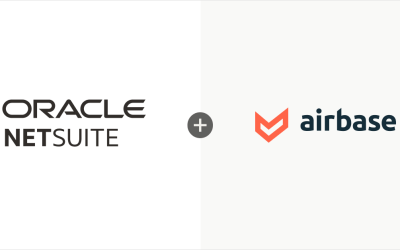The COVID-19 pandemic, an economic slowdown, more restricted access to capital — for many organizations, the last few years have been marked by quick pivots and continual re-forecasting. This uncertainty and fast pace of change have laid bare the limitations of the traditional monthly close. Fast responses demand accurate and up-to-date data. As a result, more and more finance teams now realize the advantages of a continuous close, sometimes called a “rolling close.”
A continuous close is achieved when automated processes and workflows keep the books updated and balanced in real time. That’s in contrast to a monthly close, where financial operations follow a rigid monthly calendar.
Because a continuous close provides up-to-date data, financial information reflects what’s actually happening more accurately, instead of what happened last month
The power of real-time data.
This change has far-reaching implications across an organization — it empowers decision-makers to think strategically about the future, instead of reacting to the past. It also allows finance teams to answer the question, “How am I doing against the budget right now?” Not two, four, or six weeks ago.
The analytical power that a real-time view of a company’s financial position unleashes is meaningful and can support a more agile approach to planning and forecasting. In other words, moving to a continuous close is a cultural change and a shift in accounting procedures
However, the monthly close has long been a cornerstone of accounting practice. Why are strategic finance leaders rethinking their approach to closing the books? And why now?
Part of the answer lies in the increased speed with which organizations must pivot on crucial business plans, like the major shifts in demand for a product or service we’ve witnessed since 2020. In order to make informed decisions, executives need up-to-date information. But the irony is that finance teams are often expected to produce cutting-edge analysis using archaic tools and processes.
The move to more remote workforces also plays a role. Dealing with a distributed team can make it even more difficult to get quick answers to questions or to share documents like receipts or contracts. It’s no wonder that a survey taken during a NetSuite webinar found that 43% of participants felt their monthly closes are more difficult when done from a remote location.
Innovation opens opportunities for change.
As anyone who has completed a monthly close knows all too well, reconciling, coding, and posting transactions to the GL is a time-consuming process, usually drawing information from various sources. It is also highly dependent on manual processes.
Innovations in technology now make it possible to automate the collection of real-time data from multiple sources, while syncing financial activities as they happen directly to the GL. This technology has opened opportunities to rethink standard procedures, including the monthly close.
It’s possible to simplify and shorten a monthly close by drawing on the concepts of continuous accounting. For example, a finance team could introduce more real-time automated processes in order to significantly shorten the time involved in a monthly close. Without the tools that automatically capture transaction data and make it available for easy syncing to the GL, it’s impossible to implement continuous accounting.
The monthly close is typically an all-hands-on-deck grind. A lot of other work is put on the back burner until the books are closed. Working long hours with few breaks is standard, so the rest of life is often put on hold too. Tensions can run high, especially since the risk of error is elevated when using manual, complex processes. And costs in terms of the time involved can add up. Our research shows that 61% of organizations spend at least a week on their close.
A more traditional close relies heavily on manual work, which is inherently error-prone. It’s no wonder that one survey found that only 20% of respondents felt good about their close process. And, alarmingly, only 28% say they trust their financial reporting data. Without automation, financial data is going to remain untrustworthy.
Continuous close: Tools for success.
A continuous close isn’t possible without the ability to gather data in real time and sync it to the GL. This is why the process of closing the books at a certain time each month made sense for decades — the technology simply wasn’t available to get the required information on demand.
But now, platforms such as Airbase can enable a continuous sync between corporate spending activities and the GL. In other words, as employees spend money, the GL can be updated automatically. To add accountability, supporting documents are uploaded as purchases occur. Airbase’s automated procurement workflows guide employees through every purchase and capture transaction details as they take place. Each transaction record contains:
- A complete approval record
- Purchase orders and invoices
- Payment details
- Receipts
Traditionally, closing the books has often involved asking many questions and resolving errors, particularly regarding employee expense accounts. A report from the Global Business Travel Association states that almost one in five submitted expense reports contains at least one error. Resolving all of those errors at the end of the month can take a lot of time, but when expenses are processed in real time, any issues regarding missing information and documentation are resolved long before the end of the month. Airbase’s Guided Procurement module ensures information needed by stakeholders like IT and legal is collected and inputted into the system. Accounting information like categories and tags are also verified before spending takes place, reducing the need to resolve errors during the close.
The impact of a rolling close on data integrity.
In a continuous close, as many processes as possible are automated, especially tedious tasks like data entry and reconciliation, where errors are more likely to occur. That means data is less vulnerable to human error. A well-designed system ensures that automated processes follow accounting workflows in an intuitive manner, and that stakeholders can review and approve transaction requests in their own business applications like Jira and Ironclad.
The result is more accurate data, with actionable information available sooner to guide decisions. In a monthly close system, reports often have to be created ad hoc when needed for decision-making, which can disrupt workflows. With Airbase, real-time reports on all non-payroll spend can be generated from within Airbase whenever they are needed.
When they’re not chasing after receipts or creating last-minute reports, finance team members can focus more on strategy and long-term planning.
The technology is now available to give managers better visibility into spending in order to take proactive steps to implement change by moving toward a continuous close. The result is a more empowered organization that is ready to face the challenges and opportunities that lie ahead.
To learn more about Airbase, contact us for a product demo or take an interactive tour.
Airbase is a NetSuite SuiteCloud Developer Partner.
 Jira Integration – Streamline Your Workflows
Jira Integration – Streamline Your Workflows  Ironclad Integration – Simplify Legal Operations
Ironclad Integration – Simplify Legal Operations  Asana
Asana 




